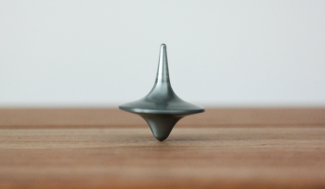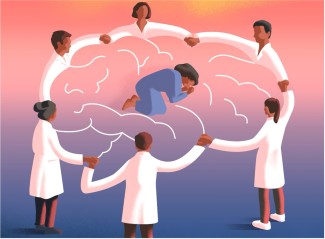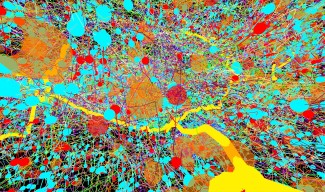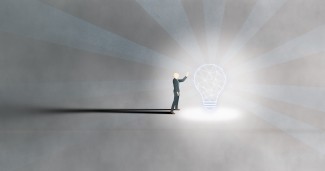In an article published in Nature Communications, researchers from 37 scientific institutions—including Paris Brain Institute—unveil the DREAM database: an ambitious project designed to centralize, share, and standardize data from research on sleep, consciousness, and dreams.
An earlier version of this press release was issued by Monash University.
An international team, coordinated by Monash University in Melbourne, with contributions of Rubén Herzog, Delphine Oudiette, Isabelle Arnulf, Célia Lacaux, Nicolas Decat, and Thomas Andrillon from Paris Brain Institute, announces the creation of a new database designed for researchers studying dreams. Named “DREAM”, it is intended to foster collaborations, harmonize ongoing research projects, and inspire new ones.
When, how and why do we dream?
To answer these questions, neuroimaging studies are crucial: they help identify the neurocognitive processes underlying conscious experiences during sleep. However, such studies require substantial resources that few research institutions possess. Most often, they rely on small samples and limited observations, making it difficult to generalize their results.
The authors of the article set out to homogenized existing scientific data—EEG recordings of brain activity during sleep and dream reports—and gather them in one place, where they will be freely accessible and usable for future research.
The DREAM database is unique: it accounts for the methodological and conceptual differences of the studies already compiled, while promoting the development of standardized recording and analysis tools. It already contains data from over 500 participants and 2,500 electroencephalographic (EEG) recordings, and it is designed to expand indefinitely.
An evolving database
The team now hopes to enhance the database by including more detailed information about participants’ dream content. This will require improvements in ethical committee approval procedures and expanded collaborations.
Nao Tsuchiya, lead researcher on the study and affiliated with Monash University, explains:
“This initiative is unprecedented. Experimental studies on dreams are very costly, and data sharing remains rare in this field. Understanding how, when, and why we dream could help us answer a fundamental scientific question: how can we determine whether someone is conscious when they are unable to communicate?
Our research is essential for shedding light on sleep and its most common disorders. But it may also be helpful in critical contexts: can patients under anesthesia have conscious experiences? And what happens in unresponsive wakefulness syndrome, when a patient appears awake but no longer interacts with their environment?
Curiously, people who wake up after surgery sometimes recall experiences they describe as dreams. Studying brain activity associated with this type of ‘intraoperative dream’ could help us develop new tools to detect conscious states during surgery.
We are only at the beginning! Many studies are coming. We have already established links with numerous researchers eager to use the data stored in DREAM, and we are preparing an article that will help standardize research methodologies. DREAM is designed to welcome new data as soon as they are published.
As the database grows, new fundamental questions emerge: why are we sometimes conscious during sleep, and sometimes not? Why do some people remember their dreams every night, while others rarely do? Why do some sleepers have lucid dreams — which they can sometimes control at will?
Exploring these questions gradually brings us closer to understanding the brain mechanisms underlying conscious experience itself.”
Recent breakthroughs in dream research include:
- Brain waves can be decoded to predict whether someone is dreaming (Siclari F. et al, 2017, Nature Neuroscience)
- Galantamine, a dementia medication, increases the frequency of lucid dreams (LaBerge S. et al, 2018, PLOS One)
- Some lucid dreamers can use eye movements to signal to an experimenter that they are dreaming (Konkoly K. et al, 2021, Current Biology)
Most dream studies use electroencephalography (EEG), a non-invasive technique that measures the brain’s electrical activity. Rubén Herzog, co–first author of the article during his postdoc at Paris Brain Institute, believes combining dream reports with neuroimaging data is a highly promising research strategy: “The joint analysis of dreamers’ subjective experience and brain activity offers a unique gateway to understanding dreams and consciousness,” he concludes.
That gateway, however, can only be opened through ambitious, large-scale studies based on close collaboration between “dream teams” all over the world.
The DREAM database involves many researchers and organizations, whose complete list can be found here.

The team aims to discover why we sleep and dream and understand the mechanisms of neurological sleep disorders to treat them better. Both clinical and basic research axes investigate hybrid states between wake and sleep, using neurophysiological...
Read moreSources
Wong, W., Herzog, R., et al. A dream EEG and mentation database. Nature Communications, Août 2025. DOI : 10.1038/s41467-025-61945-1.







